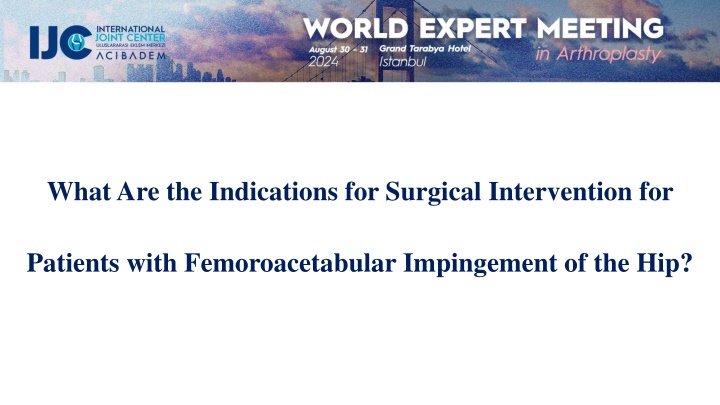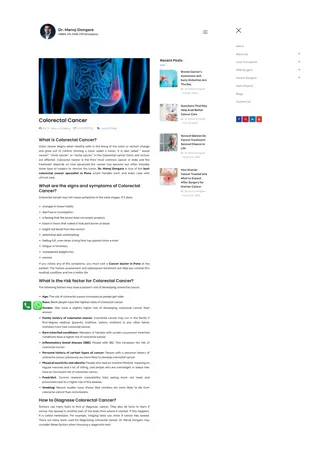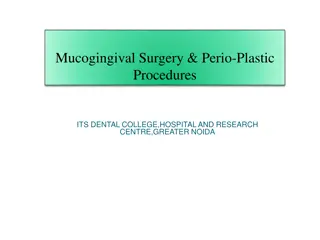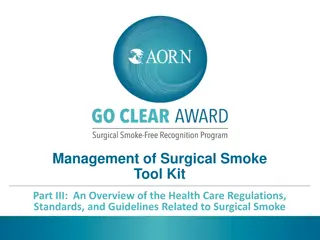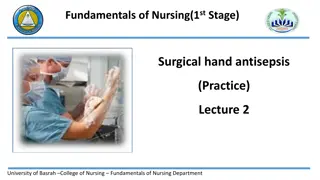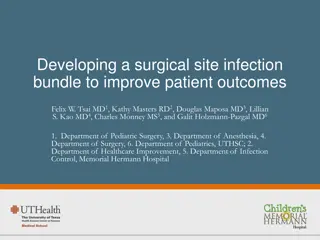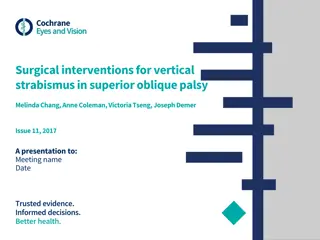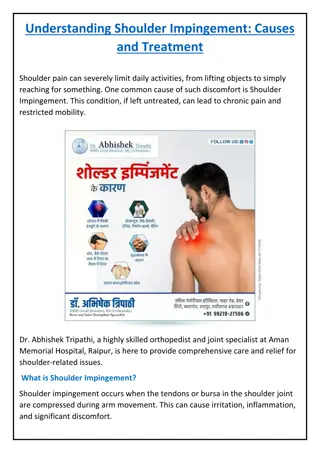Surgical Interventions in Femoroacetabular Impingement
Femoroacetabular impingement (FAI) is a significant risk factor for hip osteoarthritis. Surgical intervention plays a crucial role in managing FAI, particularly in symptomatic patients with preserved joint space. This overview discusses the indications, advancements in surgical techniques, and long-term outcomes associated with surgical treatment for FAI.
Download Presentation

Please find below an Image/Link to download the presentation.
The content on the website is provided AS IS for your information and personal use only. It may not be sold, licensed, or shared on other websites without obtaining consent from the author.If you encounter any issues during the download, it is possible that the publisher has removed the file from their server.
You are allowed to download the files provided on this website for personal or commercial use, subject to the condition that they are used lawfully. All files are the property of their respective owners.
The content on the website is provided AS IS for your information and personal use only. It may not be sold, licensed, or shared on other websites without obtaining consent from the author.
E N D
Presentation Transcript
What Are the Indications for Surgical Intervention for Patients with Femoroacetabular Impingement of the Hip?
Ali Parsa MD Benjamin Domb MD Javad Parvizi MD Ibrahim Tuncai MD Naomi Kobayashi MD Oussama Charr MD Tourik Rouk MD Arirshahriar Ariamanesh MD
Why is this topic Important Femoroacetabular impingement (FAI) is a significant risk factor for secondary osteoarthritis, particularly in young, active individuals. Addressing FAI early can prevent long-term joint damage, alleviate pain, and enhance both quality of life and athletic performance.
Literature Review/Process Mesh: Femoroacetabular impingement, Surgery, labral tear, Cam Number of articles retrieved:301 Screening:89 Final number of publications:20
Findings from Literature In recent years, with the improvement of surgical techniques, the experience of surgeons, the use of intraoperative fluoroscopy, and deformity templates, arthroscopic surgery for FAI has become much more common. It offers excellent long-term prognosis, less soft tissue damage, and faster recovery. However, there is still evidence supporting open surgical treatments, such as mini-open and surgical hip dislocation in treatment of FAI.
Voting Slide (Example) Response: Response: Symptomatic patients with femoroacetabular impingement (FAI), with well-preserved joint space (<T nnis grade 1) particularly in younger patients, who do not respond to initial non-operative treatments, are candidates for surgical intervention. There is no evidence supporting prophylactic surgery of asymptomatic FAI. Evidence: Strong
Rationale: As described by Ganz et al. (1),FAI is a significant cause of hip pain in young adults. Moreover, FAI may contribute significantly to the development of hip osteoarthritis (2-4). Results of a recent long- term study with a mean follow-up of 13 years, on progression of osteoarthritis in FAI patients, who had been treated with hip arthroscopy compared with non-surgically treated patients showed, 7% of patients in the surgical group progressed to total hip arthroplasty (THA), compared to 11% in the nonoperative control group. Moderate OA (T nnis grade 2) was observed in 12% of the surgical cohort versus 22% of the nonsurgical patients. Risk factors for failure included older age at diagnosis, male sex, presence of cam morphology, and initial arthritic joint changes. The study concluded that hip arthroscopy has a preventive effect on the development and progression of OA in young patients with FAI over the long-term follow-up (5). A recent matched cohort study suggested that correcting the cam deformity may positively affect the natural history of FAI patients with lower conversion rate to THA and better outcome scores (6). However, there is evidence that effective nonoperative treatments can alleviate symptoms and potentially postpone or even negate the requirement for surgery in FAI patients (7-9). A recent systematic review, concluded that physical therapy and activity modification may provide some benefit for patients with FAI. The study, however, concluded that there is a need to evaluate the role of non-operative treatment strategies, like physical therapy, compared to operative care, to determine their true clinical effectiveness (7).
It is known that FAI is a mechanical disorder linked to a shape defect in the hip. As a result, curative treatment entails shape-corrective surgery (10). Surgical intervention for FAI aims to correct these morphological abnormalities before irreversible joint damage occurs. A key diagnostic parameter for FAI is the alpha angle, which is used to identify cam deformities. An alpha angle greater than 55 is indicative of a cam deformity, where the femoral head is not perfectly round, leading to increased contact stress on the acetabular cartilage and labrum. Additionally, a lateral center-edge angle greater than 35 to 40 suggests a pincer deformity, characterized by overcoverage of the femoral head by the acetabulum . Positive impingement tests, such as the flexion-adduction-internal rotation (FADIR) test, are clinical signs of FAI, indicating that these morphological abnormalities are causing pathological contact within the hip joint (11,12). Surgical intervention for FAI is typically considered when patients exhibit persistent symptoms despite conservative treatments, such as physical therapy and activity modification. Indications for surgery include failure of nonoperative management to alleviate symptoms, the presence of significant structural abnormalities like a high alpha angle or a pronounced pincer deformity, and radiographic evidence of damage to the labrum or cartilage. Additionally, younger patients and those with minimal osteoarthritic changes are more likely to benefit from surgical correction. The primary goal of surgical treatment is to reshape the femoral head and/or acetabulum to restore normal hip mechanics and prevent further joint damage. Procedures may include femoroplasty to correct cam deformities, acetabuloplasty for pincer deformities, labral repair, and addressing any cartilage lesions (13). In recent years, with the improvement of surgical techniques, the experience of surgeons, the use of intraoperative fluoroscopy, and deformity templates, arthroscopic surgery for FAI has become much more common. It offers excellent long-term prognosis, less soft tissue damage, and faster recovery (17). However, there is still evidence supporting open surgical treatments, such as mini-open (18) and surgical hip dislocation in treatment of FAI (19). Current evidence is insufficient to define a cutoff for how much arthritis is too much for hip arthroscopy. However, this analysis shows that patients with a T nnis grade of 1 or greater or a joint space of 2 mm or less are less likely to benefit from hip arthroscopy and more likely to require conversion to total hip arthroplasty/surface replacement arthroplasty.
Question What are the indications for surgical intervention for patients with femoroacetabular impingement of the hip? Response: Symptomatic patients with femoroacetabular impingement (FAI), with well-preserved joint space (<T nnis grade 1) particularly in younger patients, who do not respond to initial non-operative treatments, are candidates for surgical intervention. There is no evidence supporting prophylactic surgery of asymptomatic FAI. Evidence: Strong
